Top EV range factors to extend fleet efficiency
EV range factors are the conditions and variables that affect how far an electric vehicle can travel on a single charge, such as battery health, temperature, driving habits, load and charging patterns. Learn how these factors influence fleet performance and efficiency.

Senior Manager, Sustainable Mobility at Geotab
Oct 30, 2025

Key Insights
- Electric vehicle (EV) range factors are the conditions and variables that determine how far an electric vehicle can travel on a single charge.
- Top EV range factors include battery health, air temperature, driving habits, vehicle load, terrain and charging patterns.
- These factors can influence individual fleet vehicles by affecting range, reliability and scheduling.
- Understanding and managing EV range factors can improve overall fleet performance, increase efficiency and reduce operational costs.
As companies explore the benefits of fleet electrification, they need to consider important EV range factors and how to account for their unique operating conditions, including seasonal variability.
Drawing on an in-depth analysis of EV data from 4,200 connected battery electric vehicles (BEVs) and 5.2 million trips, Geotab examined how temperature impacts EV range across diverse fleet operations.
Our findings reveal the optimal operating temperature, how range is impacted by seasonality like the dead of winter or the peak of summer and key takeaways on what you can do to extend the daily range of your EVs.
What is EV range?
Range is the distance an EV can drive on a single charge. A vehicle’s published range is based on standardized testing performed on a dynamometer in a test facility. However, as EV drivers know, the officially listed range is best taken as a guideline.
EVs, like gas or diesel vehicles, perform differently in real-life conditions depending on terrain, passenger load, driver behavior, speed and outdoor temperature. These factors all impact the vehicle’s fuel economy (how far a vehicle can go on a given amount of fuel — kWh in the case of EVs) and therefore its range.
The more energy a vehicle’s battery pack can store, the longer its range, but the fuel efficiency of the vehicle is impacted by the vehicle’s design (weight, shape, size, etc.). For a bus to go as far as a 60kWh sedan, for example, the bus would need a much bigger battery.
External conditions can negatively or positively impact the vehicle’s fuel economy on any given trip. Range anxiety is a common concern for drivers, but it isn’t unique to electric vehicles. Slamming on the accelerator between traffic lights or driving on a frigid day means worse efficiency regardless of how you fuel your car.
Key EV range factors
It’s important for drivers and fleet managers to monitor EV range factors. These factors impact how far a vehicle can travel on a single charge and directly affect efficiency, reliability and operational planning.
EVs perform differently in real-world conditions compared to their rated range. Factors such as battery quality, driving behavior, vehicle design, environmental conditions and charging habits all interact to determine actual range.
By understanding and managing key range factors, fleets can optimize performance, reduce downtime and make smarter decisions when assigning vehicles to specific routes.
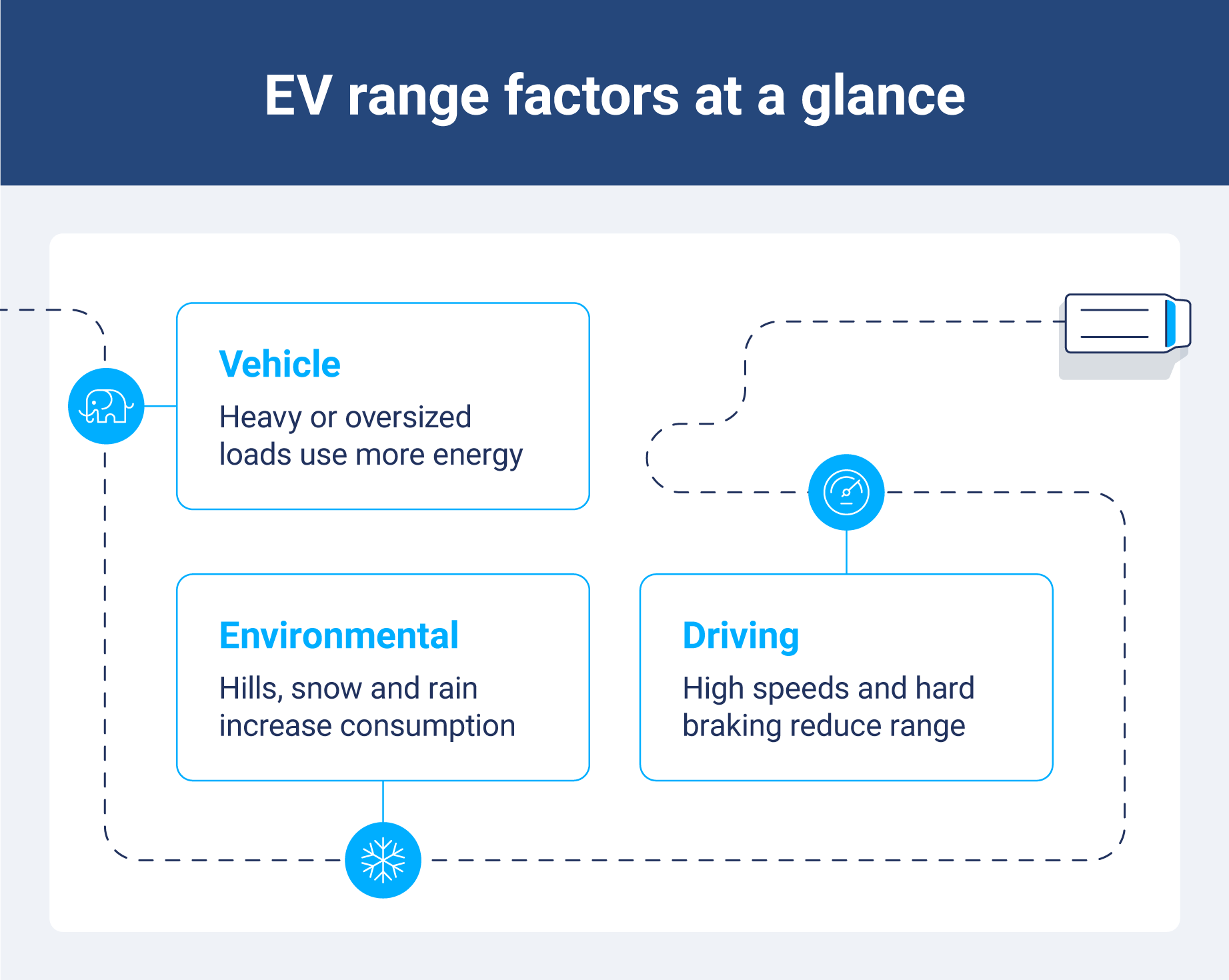
Battery quality
Battery quality is one of the most important determinants of EV range. This includes the battery’s overall capacity, state of charge and long-term health.
A well-maintained, high-capacity battery can deliver more miles per charge, while an aging or degraded battery will reduce efficiency. For fleet managers, tracking EV battery health over time ensures vehicles continue to meet operational needs.
Driver behavior
Frequent rapid acceleration, hard braking and high-speed driving all consume more energy, reducing efficiency. Smooth, moderate driving conserves battery power and allows EVs to travel further.
Encouraging drivers to adopt energy-conscious habits through driver behavior monitoring can help fleets extend EV range and reduce operational costs.
Vehicle weight and design
A vehicle’s weight, size and aerodynamics all affect efficiency. Heavier vehicles require more energy to move, and less aerodynamic designs create more drag. Vehicle load, including passengers and cargo, also impacts range.
For example, a semi-truck hauling a heavy load will use significantly more energy on a hilly route than on a flat one. Choosing flatter routes when possible can help conserve battery power and extend range. Considering vehicle specifications and load when planning routes also helps optimize performance for drivers and fleets.
Environmental conditions
Temperature, weather, terrain and road conditions influence EV range. Cold or hot temperatures reduce efficiency, hilly terrain requires more energy and wet or snowy roads can increase energy consumption.
Auxiliary systems like cabin heating or cooling further draw energy from the battery. Understanding these factors helps drivers and fleet managers anticipate range changes and plan accordingly.
Charging habits
How an EV is charged plays a role in maintaining battery health and maximizing range. Charging frequency, depth of discharge and the use of fast versus slow charging all affect efficiency over time.
For fleets, establishing consistent, optimized EV charging practices ensures vehicles are ready for daily operation and helps prolong battery life.
How EV range factors impact drivers and fleets
For individual drivers, range anxiety can be an issue, especially when routes are long, weather is extreme or charging infrastructure is limited.
Drivers need to consider how terrain, temperature and auxiliary loads affect their ability to complete trips without disruption. This often means planning routes with charging stops in mind, adjusting driving habits and monitoring real-time battery status.
For fleet owners and operators, key range factors influence scheduling, vehicle assignment, operational efficiency and total cost of ownership. Understanding how these variables impact real-world performance allows managers to make better routing decisions, reduce downtime and ensure vehicles meet daily operational requirements.
Case study: How does temperature impact EV range?
We set out to fully understand the impact temperature has on range and whether all EV models were impacted equally. To find out, Geotab looked at anonymized data from 5.2 million trips taken by 4,200 EVs representing 102 different make/model/year combinations, and analyzed average vehicle trip efficiency by temperature.
Our analysis showed that:
- Most EVs follow a similar temperature range curve, regardless of make or model.
- While both cold and hot temperatures impact range, colder climates have a larger impact.
- 70°F (21.5°C) is the vehicle trip efficiency sweet-spot.
- On average, electric vehicles will achieve 100% or more of their rated range when operating in temperatures between 50°F and 88°F (10°C to 31°C).
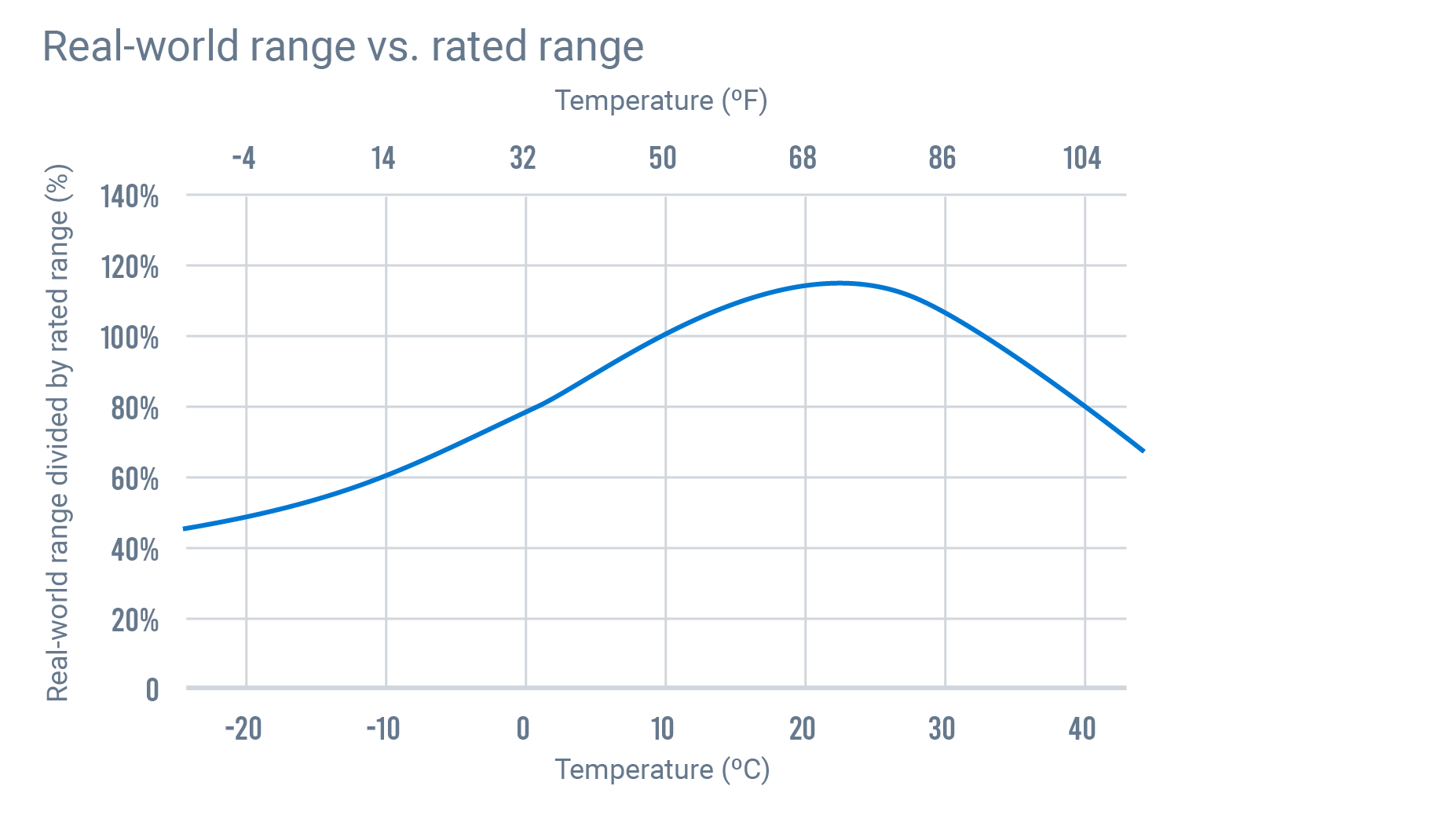
Chart 1: Temperature range curve
Our data shows that most EVs follow the same efficiency curve by temperature, irrespective of their make, model or year. The above EV range chart shows the range an EV will get (on average) compared to its rated range at any given temperature.
At optimal temperatures, EVs are performing better than their rated range, peaking at 115% at 70°F or 21.5°C. So most EV owners are exceeding the rated range of the vehicle in prime temperature conditions.
As you turn up or down the temperature, however, the loss of range is apparent. At 5°F (-15°C), EVs drop to 54% of their rated range, meaning a car that is rated for 250 miles (402 km) will only get on average 135 miles (217 km).
Cold gets a bad rap, but it turns out heat is also culpable. If you look closely, you’ll notice the range drops slightly faster (the slope is steeper) as the temperature increases. The real-world impact manifests less in hot temperatures, however, as Earth’s climate doesn’t often hit temperatures beyond 122°F (50°C), so we don’t know (nor hopefully need to care) what happens to our range after that point.
Tips to extend your EV range for maximum performance
Extreme temperatures, heavy loads, fast driving and frequent braking can all cut into range. The biggest culprit in hot or cold weather is auxiliary load or energy used for heating or cooling.
By driving smoothly, managing weight, planning efficient routes and limiting climate control use, you can keep more power for driving and get the most from every charge. Use these tips to maximize performance and keep your EV fleet running efficiently.
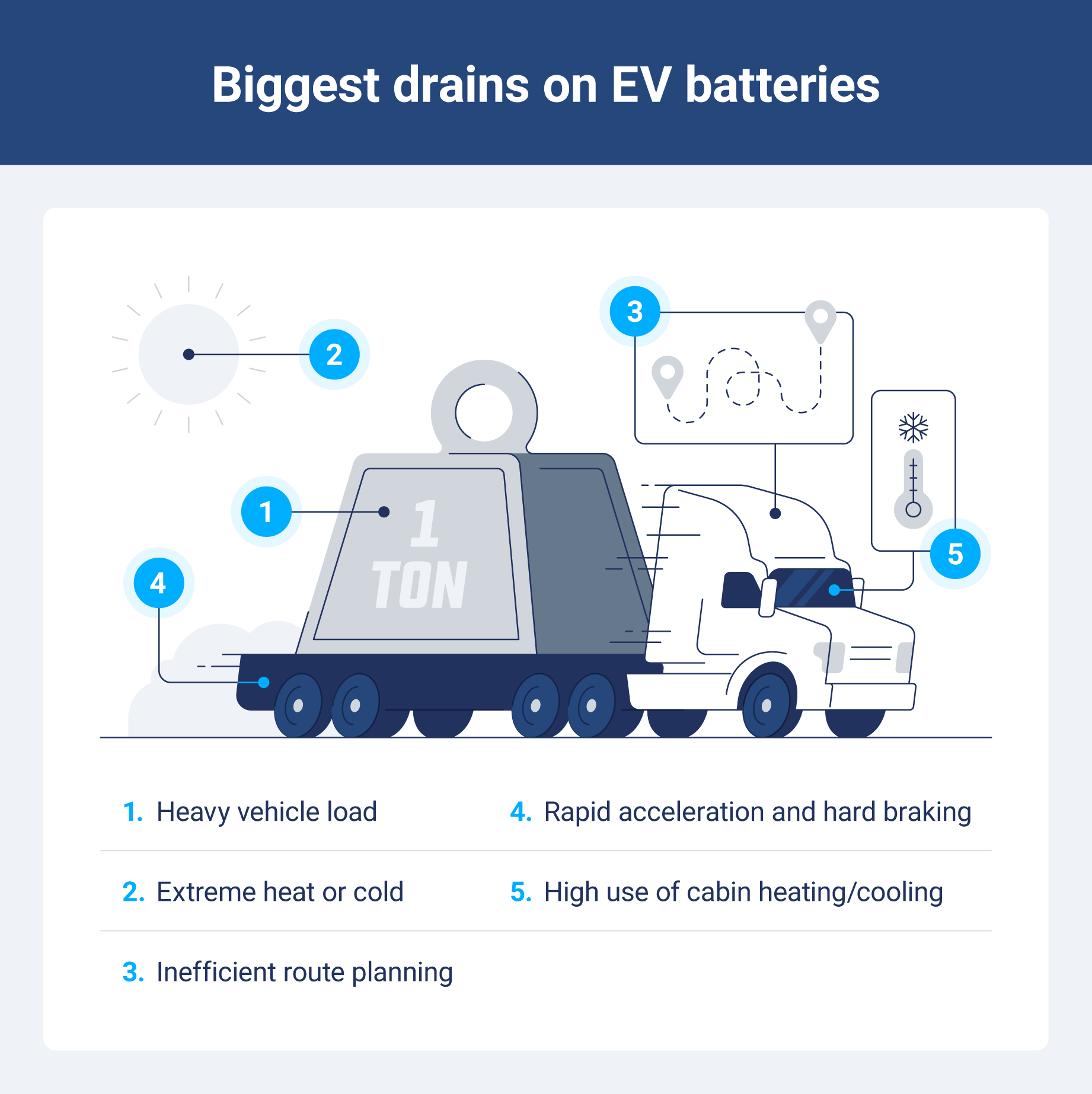
Use built-in features to heat or cool yourself instead of the cabin
Be sure to use those heated seats and steering wheel. Heating the cabin air can draw 3,000-5,000 watts, and is much less efficient than heating your seat and steering wheel (around 75 watts), which transfers heat to your body via conduction.
Using these increasingly common features can keep you comfortable without resorting to the cabin heater. However, in very cold temperatures, minimizing cabin heating can only take you so far, and you will still lose energy from your battery thermal management system.
Pre-condition your vehicle
Just like you would before exercise, warm up before a long trip! If it’s hot, cool down. Turning on your car’s heaters while it’s still plugged in will minimize the auxiliary load by warming (or cooling) your car before it starts its trip.
Take advantage of the guilt-free pre-conditioning that EVs allow. If the option is available to you, park in a temperature-controlled garage to get a similar effect.
Keep your vehicle plugged in on extreme cold or hot days
In addition to the benefits of pre-conditioning before your trip, automakers recommend plugging in vehicles during very hot or very cold days when the vehicle is not in use. (Note: This is not the same as actively charging, which is better to avoid in extreme conditions, particularly heat.)
Having a vehicle plugged in allows the internal system to maintain battery temperature controls, prolonging the life of your battery in the long run.
Drive conservatively
No matter the weather, one factor that always affects your mileage range is how you drive your vehicle. Excessive acceleration and braking and driving at high speeds all cost energy, whether electricity or gas. And that’s not just better for your mileage range — it’ll also keep you and your passengers safer, especially on wintery roads.
By anticipating the need to brake and avoiding harsh braking, you will allow your EV’s regenerative braking system to work, recovering energy and storing it back into the battery.
However, bear in mind that in extreme cold, the regenerative braking system will be less effective because cold batteries can't accept as much energy as warm batteries can.
Use the eco mode
Every EV has a slightly different function for its eco mode, but generally, they all work to reduce power consumption and increase mileage by reducing the energy supply to the drive motor and high energy consumption features such as cabin heaters.
In winter, eco modes can actually make your car safer to drive. By reducing the power to the motor, the car accelerates slower, which reduces the possibility of wheel spin on ice- or snow-covered roads.
Check your tire pressure
Tire pressure drops as the ambient temperature falls, leading to greater rolling resistance and reduced mileage range. It’s good practice to check your tire pressure every month, particularly as the outside temperatures change considerably with the seasons, like during winter driving.
Know where your fast chargers are
Cold batteries have a greater resistance to charging, meaning that EVs charge more slowly in low temperatures. Make sure you have a 240V level 2 charger available for your main charge — whether that’s overnight or while you’re at work. And if you’re planning a long winter road trip in your EV, then it’ll pay to map out where the fast charging stations are.
As battery sizes have increased with new EV models, range loss has become less of an issue. Larger capacity means little impact on most daily trip needs, and charging infrastructure continues to expand for that occasional road trip.
Seasonal and environmental considerations
Since EVs first came to market, a frequent knock against them was that they didn’t work well in winter. While many Canadian and Nordic EV drivers beg to differ, it is true that temperature is a culprit when it comes to range.
Day-to-day range is affected by temperature primarily due to auxiliary heating and cooling. Not only does energy from the battery power the vehicle, it also powers auxiliary systems, most notably regulating the temperature of the vehicle cabin and battery.
People often assume range loss in cold temperatures is due to reduced battery performance. While lithium-ion batteries are more sluggish in extreme temperatures (cold temperatures impact their ability to store and release energy), this has far less impact on range than auxiliary load.
Additionally, automakers have designed battery thermal management systems to keep batteries within an optimal temperature range, further minimizing loss in battery performance (but costing us auxiliary load).
The cost of being comfortable
It’s no coincidence that across the board, the most efficient trips were taken on days where the average outdoor temperature was 70-71°F (21-22°C). Interesting fact: This happens to be the temperature at which we humans like to keep our homes.
If you get into your car and the temperature outside is below 68°F (20°C), you are more likely to turn on the heat; above 71°F (22°C), and you’ll probably switch on the AC. Getting the cabin temperature to a comfy house-like condition draws energy from the battery that could otherwise be used to move the car.
Nonetheless, EVs tend to operate at or above their rated range from 50°F to 88°F (10°C to 31°C).
Like humans, batteries also like to be comfortable and function best at moderate temperatures (although they’re a bit more cold-friendly and tolerate a wider temperature range).
An EV’s on-board thermal management system is designed to draw energy to warm or cool the vehicle’s battery as needed. This ensures it operates in that ideal range and also helps prevent battery degradation. Therefore, the car is working to heat/cool both the occupants and the batteries in cold or hot conditions.
The best and the worst performers
The range curve below is based on the average efficiency of all trips in our databases taken at a given temperature. Because these trips were made in the real world, they were exposed to a wide variety of external factors that can impact vehicle efficiency such as terrain, speed, driver habits, trip length and start conditions (e.g., if the trip started in a climate-controlled garage).
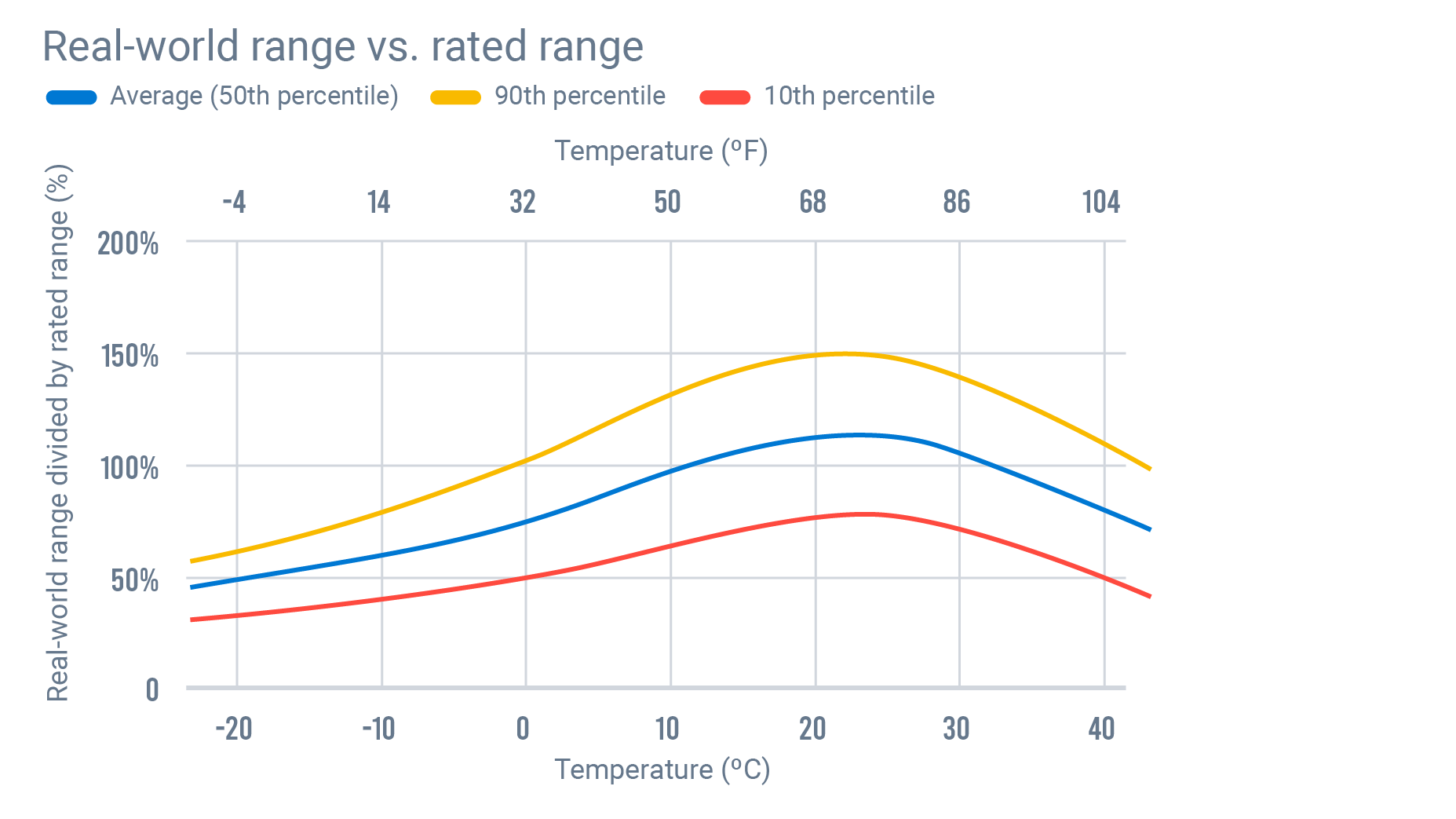
Chart 2: Range curve with 10th and 90th percentiles shows the distribution of trip efficiency one might expect at any given temperature.
This analysis does not attempt to isolate the relative impact of each factor on range. It is reasonable to assume that the most efficient trips (or best performers) at any given temperature will be due to a combination of external factors that influence vehicle efficiency. In a separate analysis, we look at the relative impact of temperature and speed.
Overall, the best performers (those in the 90th percentile) obtained 32% more range than the average, and had twice the range as those in the worst 10th percentile. This suggests there is some leeway with how far you can expect to drive on a single charge, which may be partially within your control.
While most vehicle models followed this temperature range curve, EVs utilize different battery management systems. For example, several newer EVs are equipped with a heat pump, a very efficient climate control method. The expectation is that their temperature range curves will be flatter than those without.
Supercharge your EV fleets with Geotab
Optimizing range is essential for getting the most from your fleet EVs. By understanding key EV range factors such as battery health, driving behavior, vehicle load, environmental conditions and charging patterns, fleet managers can make data-driven decisions to maximize performance.
Understanding how to choose the right electric vehicle for your specific fleet needs begins with gathering and evaluating telematics data. Fleets can pinpoint those vehicles in their fleet that are ready to go electric based on operational and financial requirements by conducting an EV Suitability Assessment.
The analysis assumes the worst-case temperature, so fleet managers can be confident that their EVs will be range-capable in winter chills, summer heat waves and everything in between.
Once fleets adopt EVs, knowing each vehicle’s real-world range is critical to ensure the right vehicle continues to be matched with the right job and make informed replacement decisions as the battery degrades. Using Geotab’s BEV range capability report, fleets can receive these insights based on factors like terrain, temperature and vehicle-specific usage patterns.
Fleet electrification is still a new topic for many fleets. If you’re unsure where to begin your research, check out Geotab’s Fleet Electrification Knowledge Center for educational insights, resources and fleet success stories.
Subscribe to get industry tips and insights
Frequently Asked Questions
The 80% rule means charging an EV up to about 80% instead of 100%. This helps protect the battery’s long-term health, reduces stress on cells and can extend the lifespan of the battery while still providing sufficient range for most daily trips.
EV range is influenced by multiple factors, including:
- Battery capacity
- Vehicle weight and aerodynamics
- Driving style
- Terrain
- Outdoor temperature
- The use of heating or cooling
Even small changes in speed or climate control use can noticeably affect how far a vehicle can travel on a single charge.
Range is the distance a vehicle can travel on a full charge (or tank). For EVs, it reflects how far the car can go under typical driving conditions before needing to recharge, though actual range can vary based on driving habits and external factors.
Most modern EVs have a typical EV range of 200-300 miles (322-483 km) per full charge. Higher-capacity batteries can create an extended range EV, but real-world driving, weather and load can reduce it from the published figures.
Very few vehicles today reach a long EV range like 500 miles on a single charge. Most models are closer to 300-400 miles (483-644 km), with some upcoming models promising incremental improvements as battery technology advances.
Yes, 3.7 miles per kWh is considered good efficiency for an EV. Typical efficiency ranges are:
Efficiency | Miles/kWh | Description |
| Excellent | 4.0+ | Very efficient, typically smaller or lighter EVs |
| Good | 3.5 to 4.0 | Most modern EVs under normal conditions |
| Average | 3.0 to 3.5 | Mid-size EVs in everyday driving |
| Below average | 2.5 to 3.0 | Larger EVs or aggressive driving |
| Poor | Less than 2.5 | Heavy EVs, extreme weather, high speeds or heavy climate use |
Efficiency can shift depending on temperature, terrain, driving style and use of heating and cooling systems. Cold weather, hilly routes, rapid acceleration or heavy climate control use can reduce efficiency, moving a “good” EV closer to the average range.

Senior Manager, Sustainable Mobility at Geotab
Charlotte Argue is a sustainable transportation and electric vehicles (EVs) thought leader, working on green fleet initiatives since 2008.
Table of Contents
Subscribe to get industry tips and insights
Related posts
.jpg)
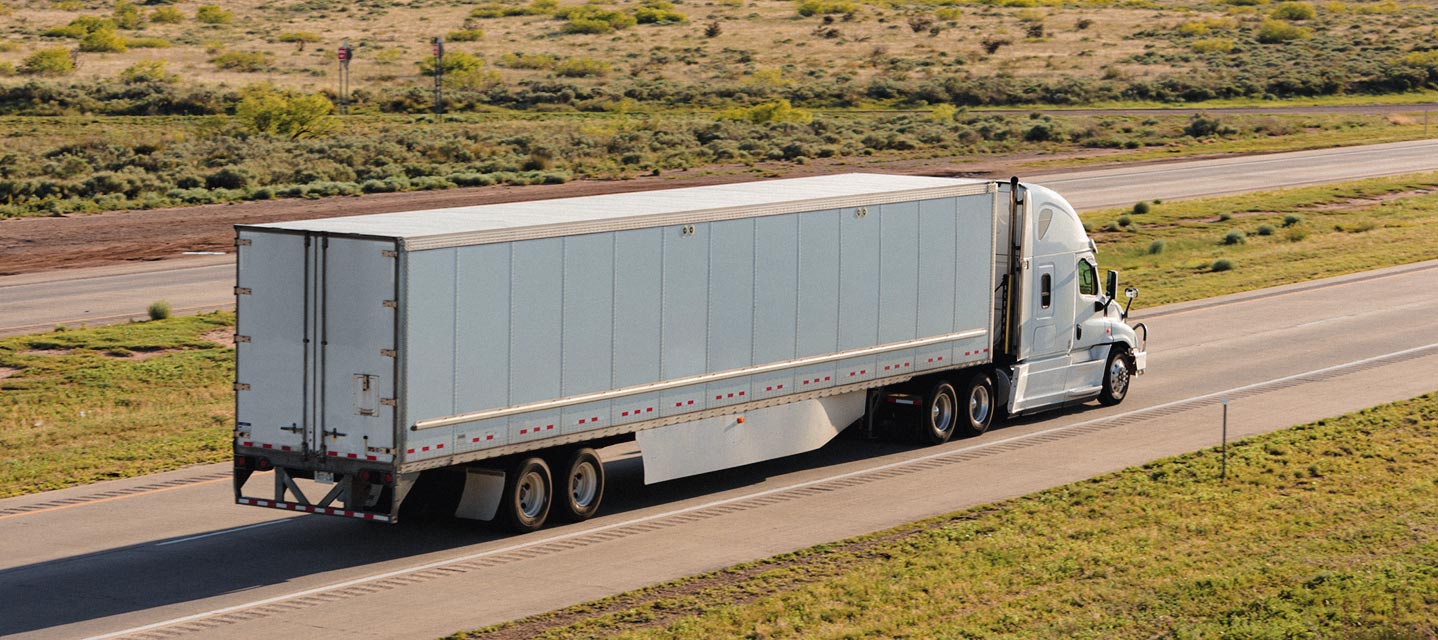
The future of transportation: Trends, research and what’s next according to experts
July 17, 2025
9 minute read
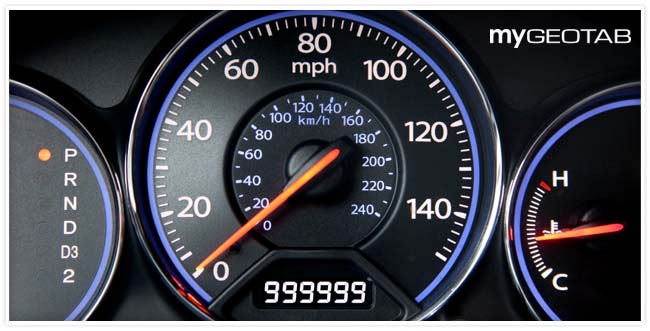
Odometer reading: How to check + optimize for smarter fleet management
July 15, 2025
5 minute read

9 strategies to increase fleet fuel efficiency and lower fuel costs
July 8, 2025
4 minute read
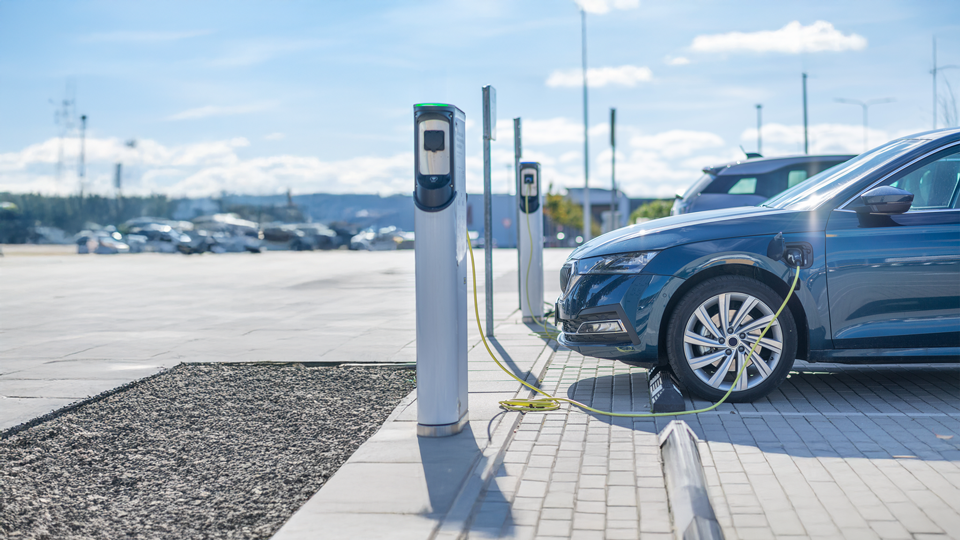
Beat the Heat: Easy Ways to Maximize Your EV Range This Summer
June 19, 2025
2 minute read

Charlotte Argue: Breaking down cost barriers for electric fleets
June 5, 2025
4 minute read